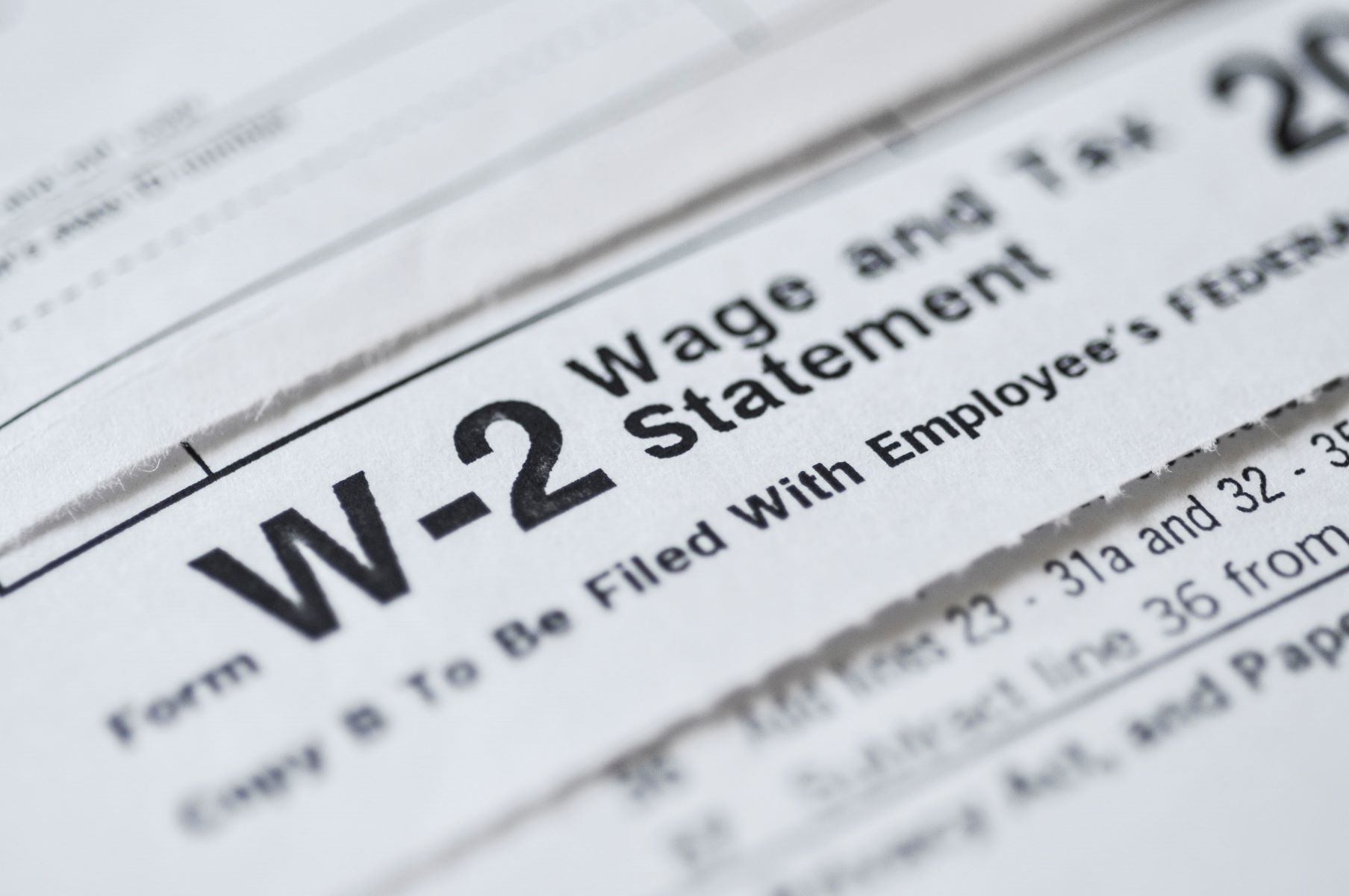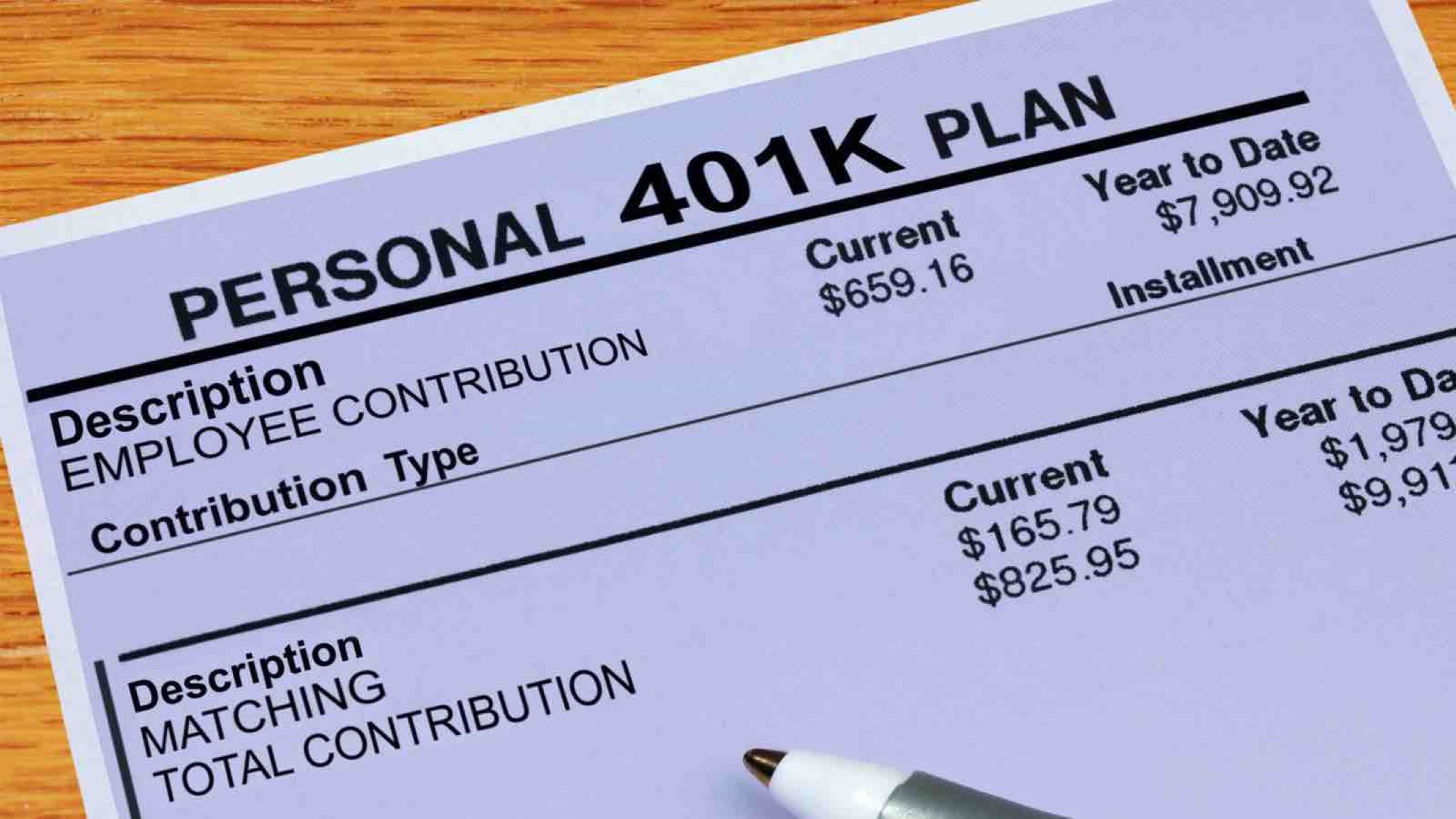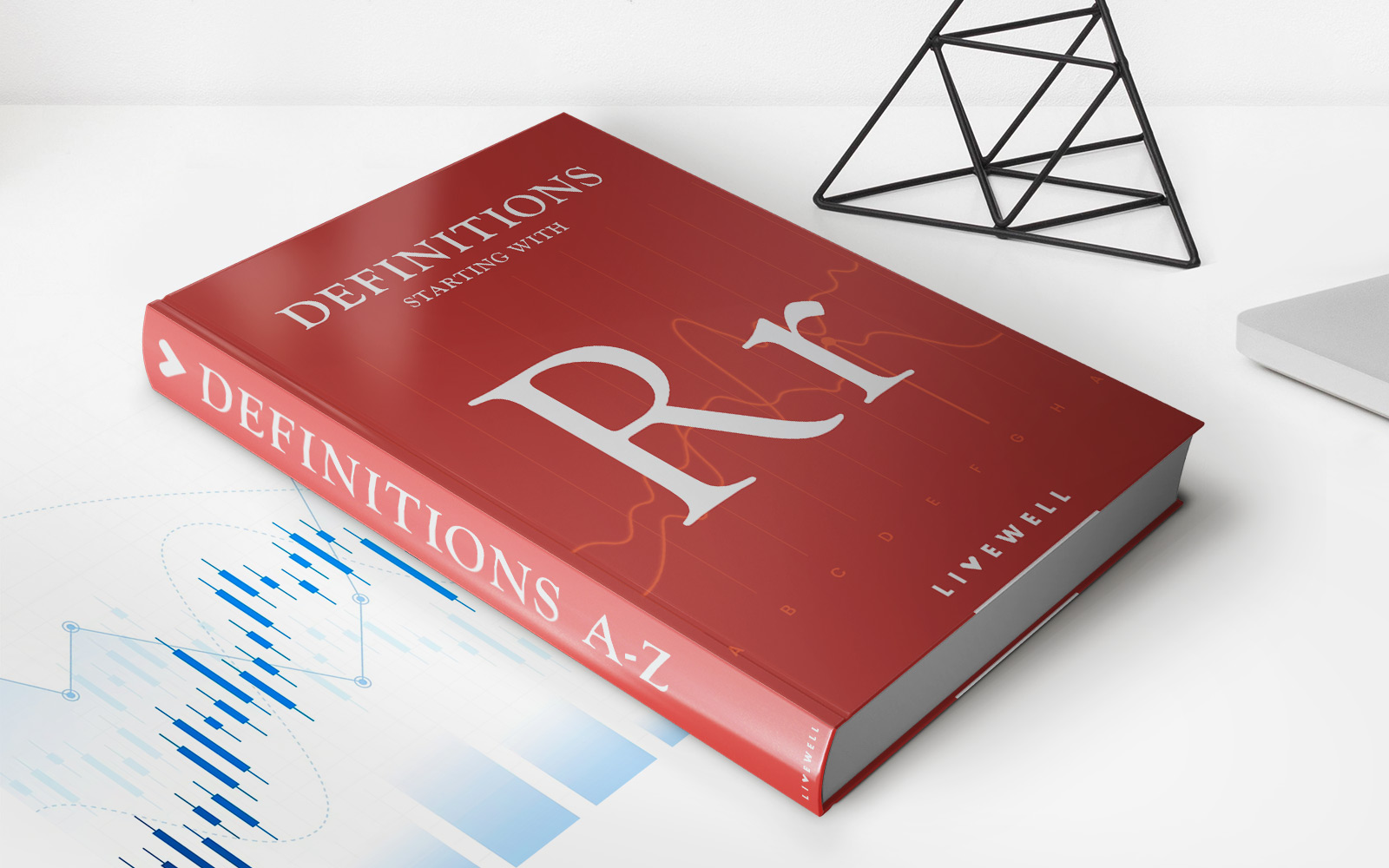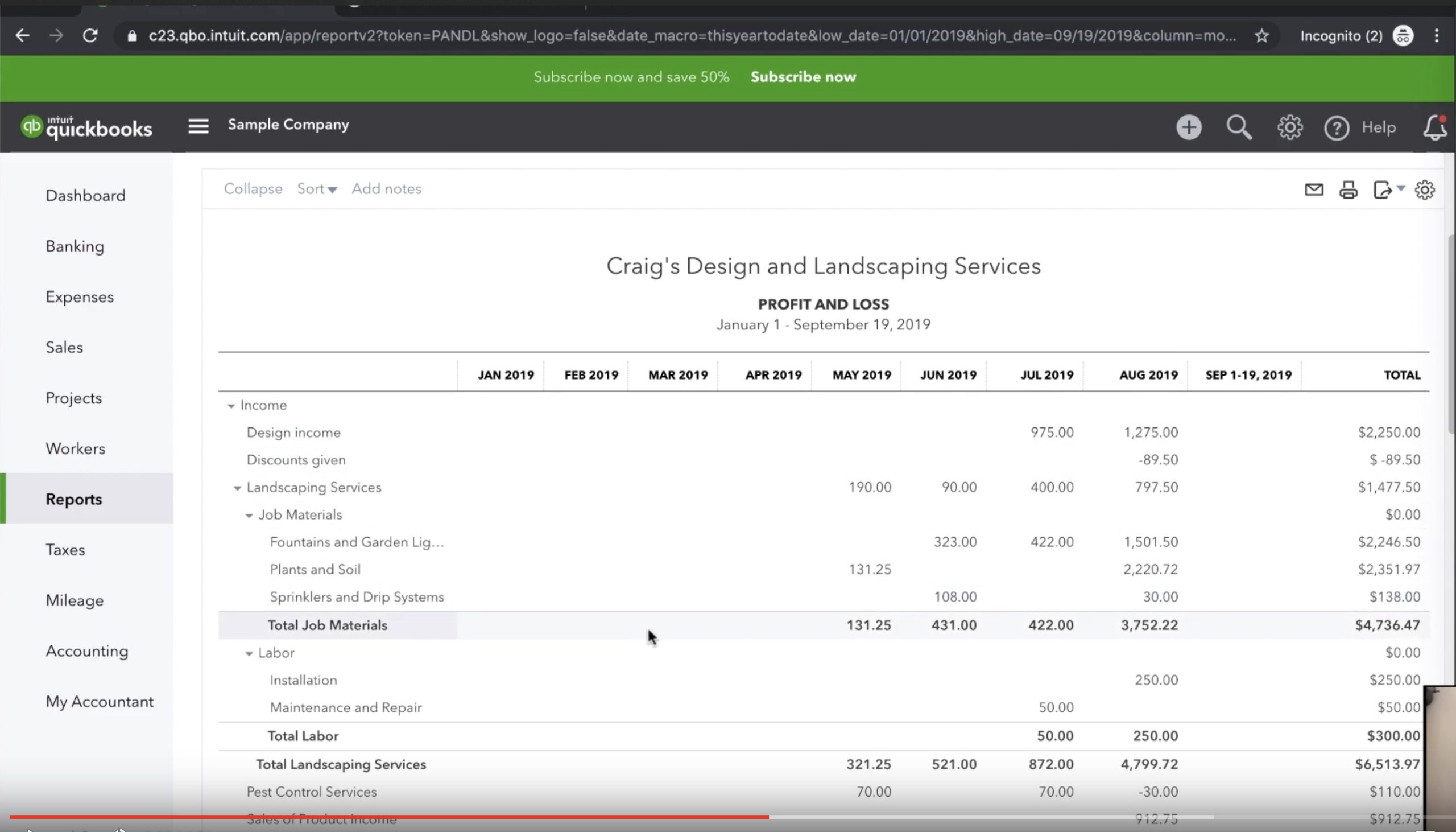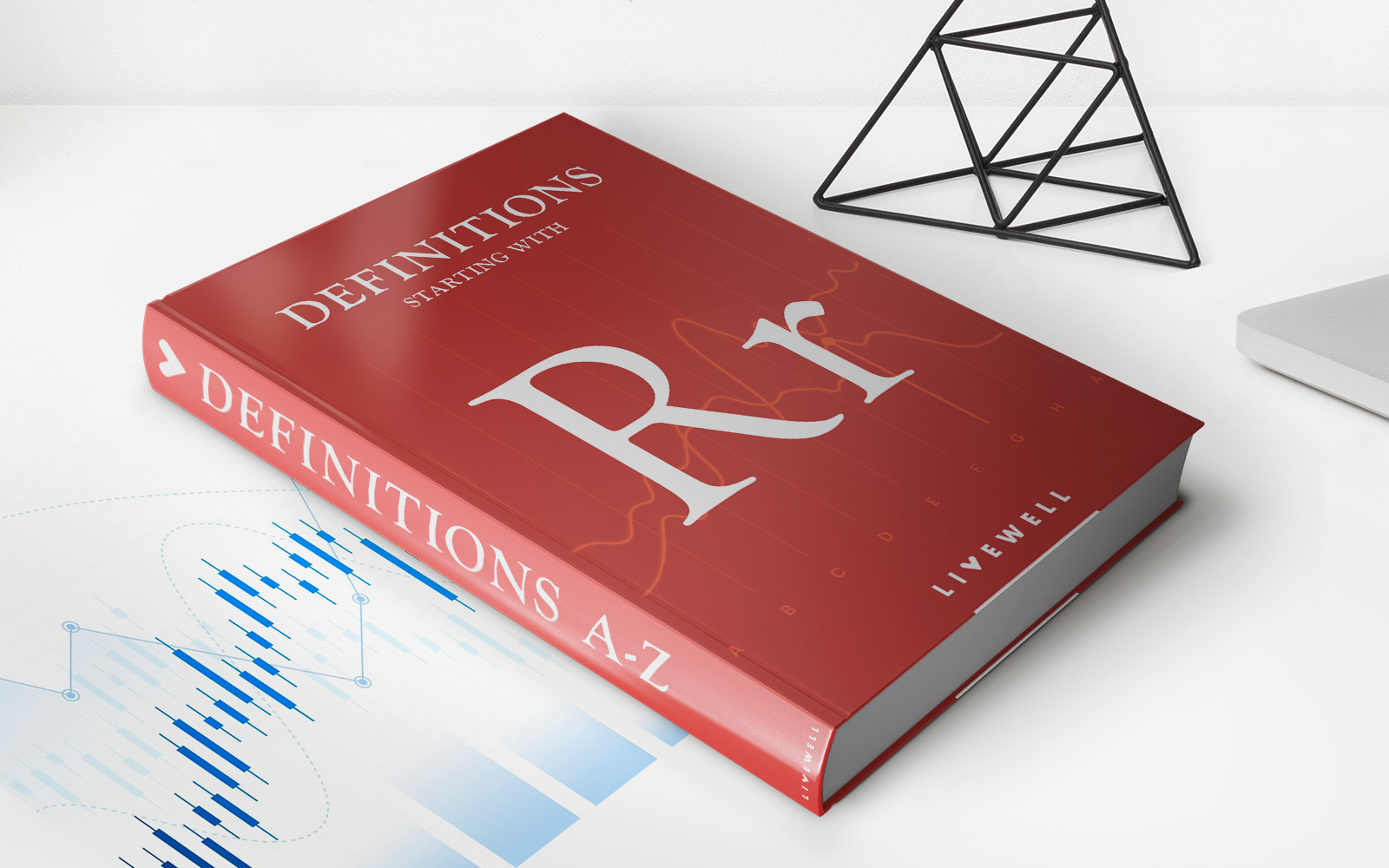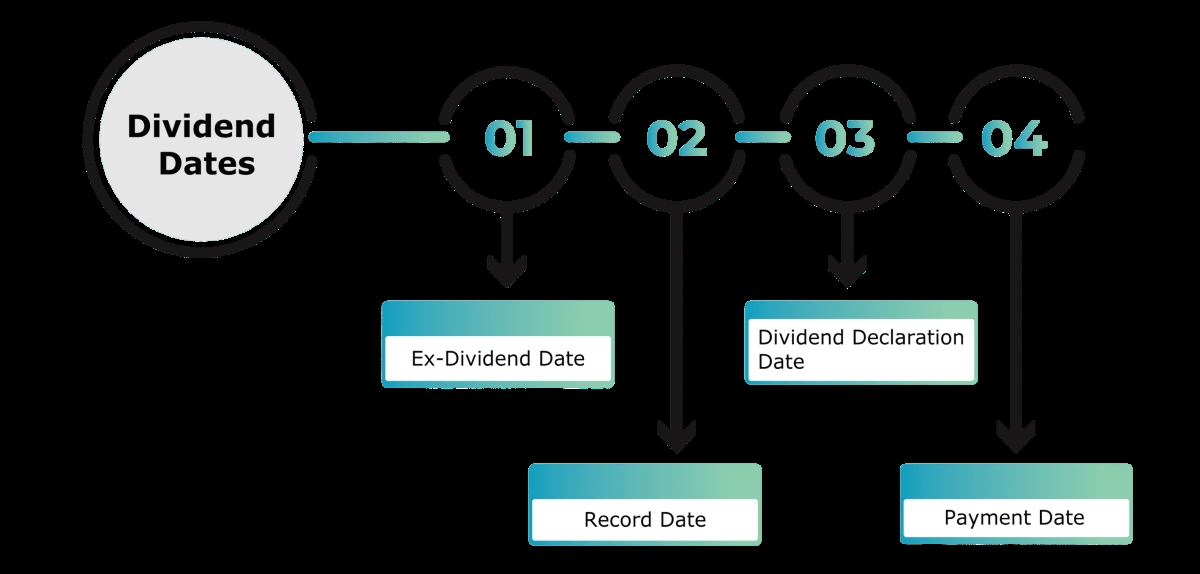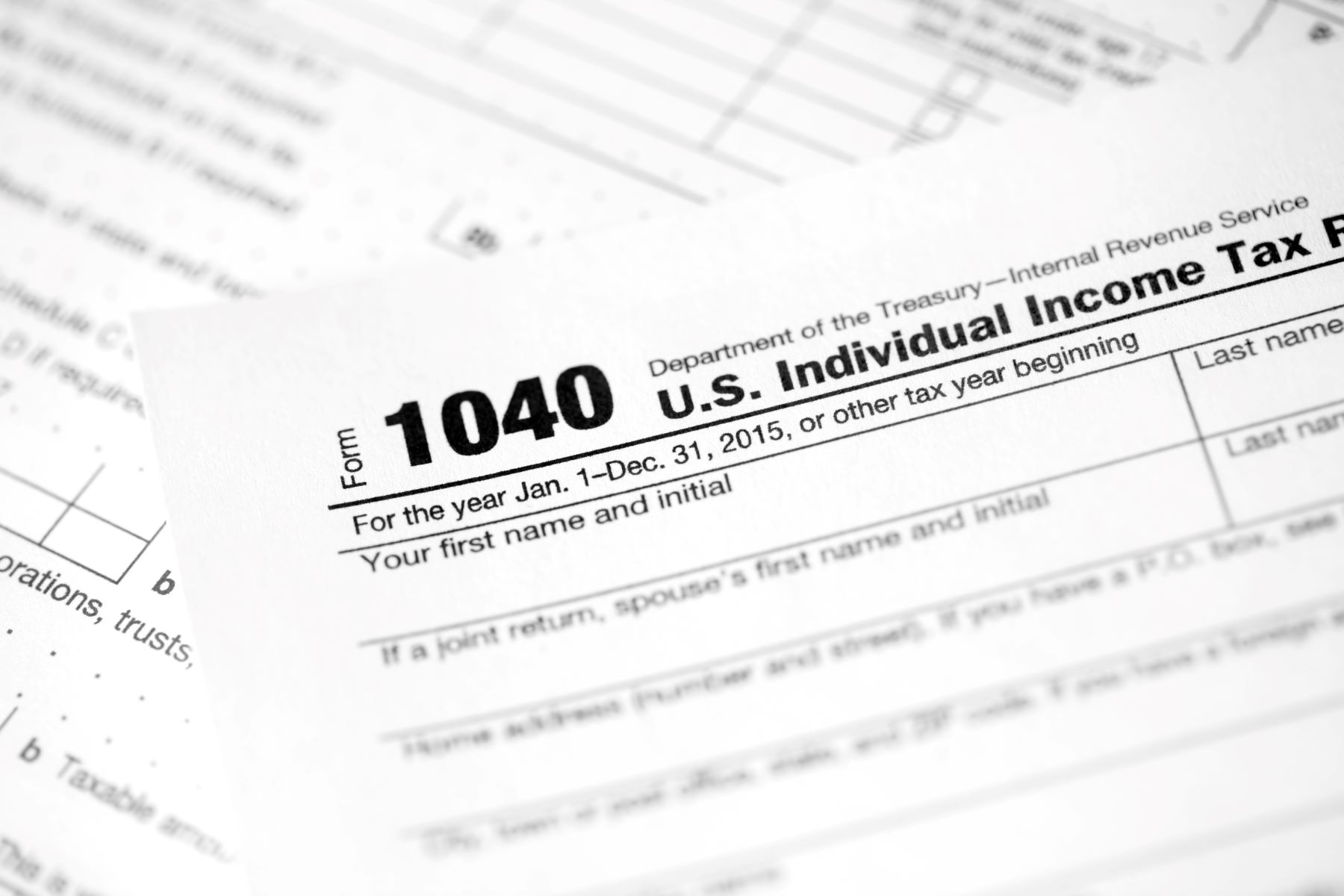

Finance
Where Do 401K Contributions Go On 1040
Modified: February 21, 2024
Learn where 401K contributions go on your 1040 form and maximize your financial savings. Expert advice and tips for managing your finances.
(Many of the links in this article redirect to a specific reviewed product. Your purchase of these products through affiliate links helps to generate commission for LiveWell, at no extra cost. Learn more)
Table of Contents
Introduction
When it comes to planning for retirement, one of the most popular and effective options available is a 401K retirement plan. A 401K allows individuals to save and invest for their golden years by contributing pre-tax dollars from their paycheck. Not only does this provide a sense of financial security, but it also offers potential tax advantages.
However, navigating the complexities of 401K contributions and reporting them on your tax return can be a bit confusing. Many individuals wonder, “Where do 401K contributions go on Form 1040?” Understanding how to report these contributions accurately is crucial for ensuring compliance with tax laws and maximizing potential tax benefits.
In this article, we will explore the process of reporting 401K contributions on Form 1040, the standard U.S. individual income tax return. We will dive into the specific lines on the form where these contributions are reported, discuss different types of 401K contributions, and highlight common mistakes to avoid. By the end, you’ll have a clear understanding of how to handle your 401K contributions when filing your taxes.
Before we delve into the reporting details, let’s ensure we have a solid foundation by understanding the basics of 401K contributions.
Understanding 401K Contributions
Before we can accurately report 401K contributions on Form 1040, it’s essential to have a clear understanding of what these contributions entail. A 401K retirement plan is a tax-advantaged investment account offered by employers to their employees. It allows individuals to set aside a portion of their salary on a pre-tax basis, which means the contributed amount is deducted from their taxable income.
By contributing to a 401K, individuals reduce their current taxable income, which can lead to significant tax savings. Additionally, the contributed funds grow tax-deferred until withdrawn during retirement. This means that individuals won’t pay taxes on the contributions and any investment gains until they start taking distributions from the account.
Employers often match a certain percentage of their employees’ contributions, which can be a valuable benefit. It’s important to note that there are annual contribution limits set by the Internal Revenue Service (IRS) for both employees and employers. As of 2021, the employee contribution limit is $19,500, with an additional catch-up contribution of $6,500 for individuals aged 50 and older.
There are two main types of 401K contributions: traditional 401K contributions and Roth 401K contributions. Traditional contributions are made with pre-tax dollars, meaning they are deducted from your taxable income for the current year. Roth contributions, on the other hand, are made with after-tax dollars, and qualified withdrawals in retirement are tax-free.
Understanding the type of contributions you have made is crucial for accurately reporting them on your tax return. In the following sections, we will discuss the specific lines on Form 1040 where these contributions are reported based on their type.
Reporting 401K Contributions on Form 1040
Now that we have a thorough understanding of 401K contributions, let’s explore how to report them on Form 1040, the standard U.S. individual income tax return. The specific lines on the form where you report your 401K contributions depend on the type of contributions you have made: traditional or Roth.
If you made traditional 401K contributions during the tax year, you will report them on Line 6 of Form 1040. Line 6 is where you report any additional income adjustments, including deductible contributions to traditional individual retirement accounts (IRAs) and traditional 401K plans. The total amount of your traditional 401K contributions will be subtracted from your total income, reducing your taxable income for the year.
On the other hand, if you made Roth 401K contributions, you do not report them on your tax return. Since Roth contributions are made with after-tax dollars, they are not deductible, nor do they affect your taxable income in the current year. However, it’s important to keep records of your Roth contributions and track your basis in the account to ensure you make tax-free withdrawals in retirement.
It’s worth noting that contributions to a traditional 401K reduce your taxable income in the current year, which can lead to immediate tax savings. However, you will need to pay taxes on the contributions and any investment gains when you withdraw the money in retirement. In contrast, Roth 401K contributions do not provide immediate tax benefits, but qualified withdrawals are tax-free in retirement.
It’s important to consult with a tax professional or use tax software to ensure you correctly report your 401K contributions on Form 1040. They can help you navigate the nuances of reporting and maximize your potential tax benefits.
Aside from Form 1040, there are other tax forms that may be relevant depending on your specific situation. For example, if you are a business owner and have a self-employed 401K plan, you may need to file additional forms such as Schedule C and Form 5500. Consulting with a tax professional can help ensure you comply with all necessary filing requirements.
Next, we will provide more detailed information on reporting traditional and Roth 401K contributions.
Line 6 of Form 1040
Line 6 of Form 1040 is where you report your traditional 401K contributions and any other additional income adjustments. Traditional 401K contributions are considered pre-tax deductions, meaning they reduce your taxable income for the year in which they were made.
To report your traditional 401K contributions on Line 6:
- Enter the total amount of your traditional 401K contributions for the tax year.
- Label the entry as “Traditional IRA deductions” and include the amount in parentheses. For example, if your contributions total $5,000, enter “-$5,000” on Line 6.
- Continue filling out the rest of the form with your other income and deduction information.
By reporting your traditional 401K contributions on Line 6, you effectively reduce your taxable income by the corresponding amount. This can lead to significant tax savings and potentially lower your overall tax liability.
It’s important to note that the IRS sets annual limits on traditional 401K contributions. As of 2021, the employee contribution limit is $19,500, with an additional catch-up contribution of $6,500 for individuals aged 50 and older. Contributions made above these limits may be subject to additional taxes and penalties.
If you have made contributions to a traditional 401K and other retirement accounts, such as a traditional IRA, you may need to fill out additional forms to report those contributions accurately. These forms include Form 8880 for the Retirement Savings Contributions Credit and Form 8606 to report non-deductible IRA contributions.
It’s important to consult with a tax professional or use tax software to ensure you correctly report your traditional 401K contributions on Line 6 of Form 1040. They can help you navigate the complexities of tax laws and ensure compliance with reporting requirements.
Next, we will discuss how Roth 401K contributions are reported on your tax return.
Line 19 of Form 1040
Line 19 of Form 1040 is where you report your Roth 401K contributions, along with any other contributions made to a designated Roth account. Roth contributions are made with after-tax dollars, meaning they do not provide an immediate tax deduction. However, qualified withdrawals from a Roth account in retirement are tax-free.
When reporting your Roth 401K contributions on Line 19:
- Enter the total amount of your Roth 401K contributions for the tax year.
- Label the entry as “Roth IRA contributions” and include the amount in parentheses. For example, if your contributions total $4,000, enter “-$4,000” on Line 19.
- Continue filling out the rest of the form with your other income and deduction information.
It’s important to note that unlike traditional 401K contributions, Roth contributions do not reduce your taxable income for the current year. They are made with after-tax dollars, so they do not provide an immediate tax benefit. However, the advantage of Roth contributions is that qualified withdrawals in retirement are tax-free.
Keep in mind that there are annual contribution limits for Roth 401K contributions as well. As of 2021, the employee contribution limit is $19,500, with an additional catch-up contribution of $6,500 for individuals aged 50 and older. Contributions made above these limits may be subject to penalties.
When it comes time to withdraw funds from your Roth 401K in retirement, you won’t have to pay income taxes on the contributions or any earnings if certain requirements are met. This can provide substantial tax savings in the long run.
It’s important to maintain accurate records of your Roth 401K contributions to ensure you make tax-free withdrawals. Keep track of the contributions made throughout the year and any changes to your contributions, such as increases or decreases.
Consulting with a tax professional or using tax software can help ensure you correctly report your Roth 401K contributions on Line 19 of Form 1040 and navigate the complexities of tax laws.
Next, we will discuss another line on Form 1040 that may be relevant when reporting your 401K contributions.
Line 28 of Form 1040
Line 28 of Form 1040 is where you report any self-employment retirement contributions, including contributions to a Solo 401K. If you are self-employed or have income from a business, you may have the option to contribute to a self-employed 401K plan, also known as a Solo 401K.
When reporting self-employed 401K contributions on Line 28:
- Enter the total amount of your self-employed 401K contributions for the tax year.
- Label the entry as “Self-employed SEP, SIMPLE, and qualified plans.”
- Include the total amount of your self-employed contributions on Line 28.
Contributions to a self-employed 401K plan are considered “employer contributions” and are generally deducted separately from your personal contributions. The total amount contributed to your plan, both as an employer and employee, cannot exceed certain annual limits set by the IRS. For 2021, the maximum contribution is generally $58,000 or 100% of your self-employment income, whichever is less.
Self-employed 401K plans offer an opportunity to save for retirement and potentially reduce your taxable income. By contributing to a self-employed 401K, you are able to deduct the contributions as a business expense, which lowers your overall taxable income.
It’s important to keep accurate records of your self-employed 401K contributions, including documentation of the contributions made throughout the year. This will help ensure that you report the correct amount on Line 28 of Form 1040 and stay compliant with tax laws.
If you are self-employed and contribute to other types of retirement plans, such as a Simplified Employee Pension (SEP) IRA or a Savings Incentive Match Plan for Employees (SIMPLE) IRA, you may need to fill out additional forms to report those contributions accurately. These forms include Form 5498 and Form 5305-SEP. Consulting with a tax professional or using tax software can help you navigate these additional forms and ensure proper reporting.
Remember to consult with a tax professional or use tax software to ensure you correctly report your self-employed 401K contributions on Line 28 of Form 1040 and comply with all tax laws and filing requirements.
Next, we will discuss common mistakes to avoid when reporting 401K contributions on your tax return.
Other Relevant Tax Forms
While Form 1040 is the main tax form where you report your income and deductions, there are other forms that may be relevant when reporting your 401K contributions, depending on your specific situation. These forms help provide additional information and ensure accurate reporting of your retirement savings.
Here are some other tax forms that you may encounter when reporting 401K contributions:
- Form 8880: If you made contributions to a traditional 401K or other retirement accounts, such as a traditional IRA, and meet certain income requirements, you may be eligible for the Retirement Savings Contributions Credit. Form 8880 helps calculate this credit, also known as the Saver’s Credit, which can provide a valuable tax break for eligible individuals.
- Form 8606: If you made non-deductible contributions to a traditional IRA, it’s important to track and report these contributions on Form 8606. This form helps determine the basis of your traditional IRA and ensures that you do not pay taxes on those non-deductible contributions when you withdraw them in retirement.
- Form 5500: If you are a business owner and offer a 401K plan to your employees, you may need to file Form 5500, which is the Annual Return/Report of Employee Benefit Plan. This form provides information about your plan, including participant demographics, contributions, and investments.
It’s important to understand which additional tax forms, if any, apply to your specific situation. Failing to file the necessary forms or provide accurate information can lead to penalties or complications with the IRS.
Remember that tax laws and reporting requirements can change, so it’s advisable to consult with a tax professional or use tax software to ensure compliance with the most up-to-date regulations and to accurately report your 401K contributions on all relevant tax forms.
By being aware of and properly utilizing these additional tax forms, you can ensure that you are reporting your 401K contributions accurately and maximizing any potential tax benefits available to you.
Next, we will discuss common mistakes to avoid when reporting your 401K contributions on your tax return.
Reporting Traditional 401K Contributions
Reporting traditional 401K contributions on your tax return is essential for accurately reflecting your retirement savings and potentially reducing your taxable income. Traditional contributions are made with pre-tax dollars, meaning they are deducted from your taxable income for the year.
When reporting your traditional 401K contributions:
- Refer to your year-end 401K statement or consult with your employer’s human resources department to determine the total amount of your contributions for the tax year.
- On Form 1040, report your traditional 401K contributions on Line 6, labeled as “Traditional IRA deductions.”
- Enter the total amount of your contributions as a negative number in parentheses. For example, if your contributions total $8,000, enter “-$8,000” on Line 6.
By reporting your traditional 401K contributions on Line 6, you are effectively reducing your taxable income by the corresponding amount. This reduction can lead to significant tax savings and potentially lower your overall tax liability for the year.
It’s important to note that there are annual contribution limits set by the IRS for traditional 401K contributions. For 2021, the employee contribution limit is $19,500, with an additional catch-up contribution of $6,500 for individuals aged 50 and older. Contributions made above these limits may be subject to additional taxes and penalties.
Also, keep in mind that if you have made contributions to other retirement accounts, such as a traditional IRA or a SEP IRA, you may need to fill out additional tax forms, such as Form 8880 or Form 8606, to accurately report those contributions.
It’s recommended to consult with a tax professional or use tax software to navigate the complexities of reporting traditional 401K contributions. They can help ensure that you report the correct amount on Line 6 of Form 1040 and take full advantage of the tax benefits associated with your retirement savings.
Next, we will discuss how to report Roth 401K contributions on your tax return.
Reporting Roth 401K Contributions
Reporting Roth 401K contributions on your tax return is a straightforward process. Roth contributions are made with after-tax dollars, meaning they do not provide an immediate tax deduction. However, qualified withdrawals from a Roth account in retirement are tax-free.
When reporting your Roth 401K contributions:
- Consult your year-end 401K statement or contact your employer’s human resources department to determine the total amount of your contributions for the tax year.
- On your tax return (Form 1040), there is no specific line to report Roth 401K contributions. Since these contributions are made with after-tax dollars and do not affect your taxable income for the current year, there is no need to report them on your tax return.
- It is important to keep accurate records of your Roth 401K contributions, including documentation of the contributions made throughout the year. This will ensure you have the necessary information for tax planning purposes and for tracking your basis in the account.
While Roth 401K contributions do not provide an immediate tax benefit, they offer the advantage of tax-free withdrawals in retirement. When you reach retirement age and start taking qualified distributions from your Roth 401K, you will not owe any income taxes on the contributions or any earnings accumulated over the years.
It’s important to note that there are annual contribution limits for Roth 401K contributions as well. For 2021, the employee contribution limit is $19,500, with an additional catch-up contribution of $6,500 for individuals aged 50 and older. Contributions made above these limits may be subject to penalties.
Keeping accurate records of your Roth 401K contributions is crucial, as it will help ensure that you can properly track your basis in the account. This will enable you to make tax-free withdrawals in retirement and avoid paying unnecessary taxes on the contributions you have already paid taxes on.
Consulting with a tax professional or using tax software can provide further guidance on managing and reporting your Roth 401K contributions and ensuring compliance with tax laws.
Next, we will discuss common mistakes to avoid when reporting your 401K contributions on your tax return.
Common Mistakes to Avoid
Reporting your 401K contributions accurately on your tax return is crucial to avoid potential errors or consequences. Here are some common mistakes to avoid when reporting your 401K contributions:
- Underreporting or failing to report contributions: Ensure that you accurately report both traditional and Roth 401K contributions. Underreporting or omitting contributions can lead to inaccuracies in your tax return and may result in potential penalties or audits.
- Exceeding contribution limits: Be mindful of the annual contribution limits set by the IRS for both traditional and Roth 401K contributions. Contributing more than the allowed limit can result in excess contribution penalties. Keep track of your contributions throughout the year to stay within the limits.
- Mixing up traditional and Roth contributions: Clearly identify and differentiate between traditional and Roth contributions. While traditional contributions are reported on Form 1040, Roth contributions do not need to be reported since they are made with after-tax dollars.
- Incorrectly reporting self-employed contributions: If you are self-employed and contribute to a self-employed 401K plan, ensure that you accurately report your contributions on the appropriate line of Form 1040 and any additional required forms.
- Failing to keep accurate records: It’s essential to maintain detailed records of your 401K contributions, including documentation of the contributions made throughout the year. This will help you accurately report the correct amount on your tax return and provide necessary proof if any discrepancies arise.
- Not seeking professional guidance: Tax laws can be complex and subject to change. Seeking guidance from a tax professional or using reliable tax software can help you navigate the reporting process, ensure compliance with tax laws, and maximize potential tax benefits.
By avoiding these common mistakes and taking the necessary precautions, you can accurately report your 401K contributions, minimize errors and penalties, and make the most of the tax advantages offered by your retirement savings plan.
Final Thoughts:
Reporting your 401K contributions correctly on your tax return is essential for both compliance with tax laws and optimizing your tax benefits. Understanding the specific lines on Form 1040 where you report traditional and Roth contributions, as well as potential additional tax forms, is crucial for accurate reporting.
Remember to consult with a tax professional or use tax software to navigate the complexities of reporting your 401K contributions. And always keep detailed records of your contributions to ensure accuracy and provide necessary documentation if required.
By accurately reporting your 401K contributions and avoiding common mistakes, you can have peace of mind knowing that you are making the most of your retirement savings and complying with tax regulations.
Conclusion
Reporting your 401K contributions correctly on your tax return is essential for ensuring compliance with tax laws and potentially maximizing your tax benefits. Understanding the specific lines on Form 1040 where you report your traditional and Roth contributions is crucial for accurate reporting and optimizing your tax strategy.
When reporting traditional 401K contributions, make sure to accurately report the total amount on Line 6 of Form 1040. This deduction can help reduce your taxable income for the year, resulting in potential tax savings.
On the other hand, Roth 401K contributions do not need to be reported on your tax return, as they are made with after-tax dollars and do not affect your current year’s taxable income. However, it’s important to keep accurate records of your contributions for future tax planning and to ensure tax-free withdrawals in retirement.
It’s crucial to avoid common mistakes such as underreporting contributions, exceeding contribution limits, or mixing up traditional and Roth contributions. Maintaining accurate records and seeking professional guidance can help ensure accurate reporting and compliance with tax laws.
Remember that tax laws and regulations can change, so staying informed and seeking professional advice is always advisable. A tax professional or reliable tax software can guide you through the complexities of reporting your 401K contributions and help you make the most of your retirement savings.
By accurately reporting your 401K contributions and avoiding common mistakes, you can confidently navigate the tax filing process, maximize potential tax benefits, and ultimately work towards a more secure and prosperous retirement.







